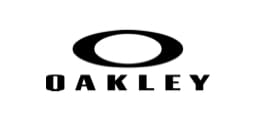What Is Dry Eye Disease?
Dry eye disease (or dry eyes) is a common condition affecting approximately 30% of Canadians. It occurs when your tears cannot adequately moisturize your eyes. If you’ve been dealing with its symptoms for months on end, you may have chronic dry eye.
Many do not notice the signs of dry eyes at first, and you may even think they are ordinary parts of everyday life, especially if you use the computer frequently. If you experience any of these symptoms, request an appointment, and our team will help you find the relief you deserve!
Take the quiz below to see if you’re a candidate for dry eye therapy!
Dry Eye Symptoms
Besides discomfort and irritation, you may experience:
- Red eyes
- A burning or stinging sensation
- Blurred vision
- Eye fatigue
- Light sensitivity
- A feeling like something is in your eye
- Itchy or scratchy eyes
- Watery eyes


What Causes Dry Eye?
Dry eyes are typically caused by an issue within your tear film. Your team film has 3 layers, each designed to moisturize and protect your eyes:
- Mucous (mucin)
- Water (aqueous fluid)
- Oil (lipid)
Every time you blink, your tear film spreads across your eye’s surface to clear debris, moisturize, and protect it. Issues arise when there is instability within your tear film. Insufficient tear production or poor quality of tears are the primary causes of dry eyes.
Insufficient Tear Production
A lack of tear production is also called aqueous deficient dry eye. As people age, tear production decreases, and many adults over 60 have dry eye symptoms. Tears hydrate your eyes each time you blink, and a lack of production can cause pain.
Poor Tear Quality
Poor quality of tears is referred to as evaporative dry eye and is the most common type of dry eye disease. This dry eye variant is affected by the oil layer of your tear film. Oil (meibum) releases from small (meibomian) glands in your eyelids, which prevents your tears from drying out. If these glands become blocked or clogged, tears evaporate quickly, causing inflammation and discomfort. Improperly functioning glands and meibum can cause evaporative dry eye.
External Causes
While dry eyes are generally caused by an issue with your tear film, there are other reasons issues may develop. Several external factors can contribute to the development of dry eye disease, including:
- Age: Our tear production tends to diminish as we get older.
- Medications: Many antidepressants, antihistamines, contraceptives, & other medications have side effects contributing to dry eyes.
- Environment: Dry climates, smoke, wind, or even your air conditioning can dry out your eyes and cause irritation.
- Medical Conditions: Certain medical conditions such as lupus, Sjörgen’s syndrome, scleroderma, & allergic eye disease can contribute to dry eyes.
- Skin & Eyelid Disorders: Conditions such as blepharitis and meibomian gland dysfunction can block or clog the meibomian glands in your eyelids needed to produce the oil layer of your tear film.
- Sex: A lack of tears is more common in women.
Dry Eye Treatments
While there is no official cure for dry eye, our team can help you find long-term relief. Various treatments can help manage your symptoms and make your eyes more comfortable. We can recommend the best course of action during a comprehensive eye examination.
After your assessment, Dr. Finlay will recommend treatments based on your unique needs. Some treatments available at Doctors EyeCare Grande Prairie include:
- Prescriptive eye drops to moisten & treat chronic dry eye
- Medications to stimulate oil production or reduce inflammation
- Punctal plugs to prevent tear drainage
- iLux treatments to warm & unplug affected meibomian glands.
No matter the treatment you receive, our team has your best interests in mind. If you suffer from dry eye symptoms, request an appointment and experience long-term relief.
Our Location

Our Address
- 11709 102 Street, Unit 107
- Grande Prairie, AB T8V 7S6
Contact Us
- Phone: (780) 830-5330
- Email: [email protected]
Clinic Hours
- Monday (Alternating): 9:00 AM – 3:00 PM
- Tuesday: 11:00 AM – 7:30 PM
- Wednesday: 10:00 AM – 5:00 PM
- Thursday: 9:00 AM – 5:00 PM
- Friday: 9:00 AM – 5:00 PM
- Saturday: Closed
- Sunday: Closed

Our Brands
Most of the frames we offer are European-made, giving you a unique and stylish alternative to typical U.S.-based options.









Our Google Reviews


Our Blog
How Long Are Glasses Prescriptions Good For?
Eye HealthFrames & LensesGlasses prescriptions are generally valid for one to two years. […]
How to Tell if Your Sunglasses Are Polarized
Frames & LensesSunglassesWhether your goal is to cut through glare, reduce discomfort on bright days, or simply verify what you already own, we’ll walk you through everything you need to know about identifying polarized lenses. […]
How Long Do Eye Exams Take?
Eye ExamsEye HealthMost eye exams take between 30 to 75 minutes, depending on your age, health history, and the type of exam. […]
How Long Are Glasses Prescriptions Good For?
How to Tell if Your Sunglasses Are Polarized

Whether your goal is to cut through glare, reduce discomfort on bright days, or simply verify what you already own, we’ll walk you through everything you need to know about identifying polarized lenses. […]
How Long Do Eye Exams Take?

Most eye exams take between 30 to 75 minutes, depending on your age, health history, and the type of exam. […]










